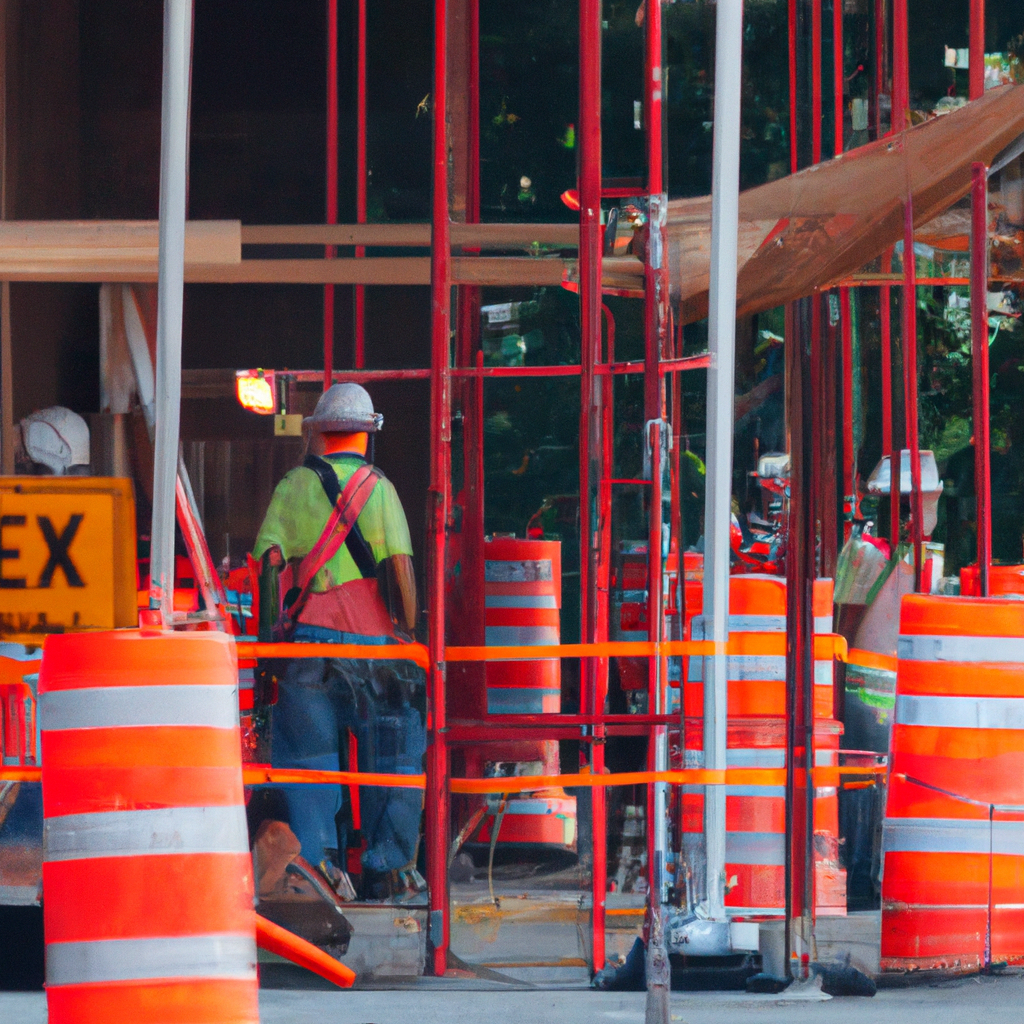We understand the utmost importance of construction site safety. With the construction industry constantly evolving and growing, it is crucial to prioritize the well-being of workers and ensure a secure scaffold environment. In this comprehensive guide, we will delve into the various measures and protocols that can be implemented to prevent accidents and create a safe working environment. By following these guidelines, you can not only protect your workers but also minimize downtime, reduce costs, and maintain a positive reputation within the industry.

Understanding the Risks
Construction sites are inherently hazardous environments, making it crucial to identify and understand the potential risks involved. By being aware of these risks, you can proactively address them and implement preventive measures to minimize accidents. Some of the common risks associated with construction sites include:
- Falls from heights: Working on elevated platforms, such as scaffolds, exposes workers to the risk of falling. These falls can result in severe injuries or even fatalities.
- Structural collapses: Poorly constructed scaffolding or other structural components can lead to collapses, endangering the lives of workers.
- Falling objects: Materials, tools, or debris falling from heights can cause serious injuries to workers below.
- Electrocution: Construction sites often involve electrical equipment and wiring, posing a risk of electrocution if not handled properly.
- Tripping hazards: Cluttered or poorly maintained work areas can lead to tripping and falling accidents.
- Exposure to hazardous substances: Workers may come into contact with hazardous substances such as chemicals, asbestos, or silica, which can have long-term health effects.
Implementing Safety Measures
Conducting thorough risk assessments
Before commencing any construction project, it is essential to conduct a comprehensive risk assessment. This assessment should identify potential hazards and evaluate their likelihood and severity. By understanding the risks specific to your project, you can develop effective safety protocols and implement measures to prevent accidents.
Training and Education
One of the most critical aspects of construction site safety is providing proper training and education to all workers. This includes:
- Scaffold safety training: All workers involved in scaffold-related activities should undergo specialized training to ensure they are familiar with safe practices, equipment usage, and emergency procedures.
- Fall protection training: Workers must receive training on the correct usage of fall protection equipment, such as harnesses and lifelines, to prevent falls from heights.
- Hazardous substance handling training: If workers are exposed to hazardous substances, they must receive training on their proper handling, storage, and disposal.
Ensuring proper scaffold design and construction
Scaffolds play a crucial role in construction projects, providing workers with safe access to heights. To ensure a secure scaffold environment, it is important to follow these guidelines:
- Engage qualified professionals: Consult with qualified engineers or scaffold designers to ensure the scaffold design meets all safety requirements and local regulations.
- Regular inspections: Conduct regular inspections of scaffolds to identify any potential issues or defects that could compromise safety. Inspections should be performed before each work shift and after extreme weather conditions.
- Stability and load capacity: Ensure the scaffold is stable and capable of supporting the intended load. Never exceed the scaffold’s load capacity, as it can lead to structural failures.
- Guardrails and toe boards: Install guardrails and toe boards on scaffolds to prevent falls and falling objects. These safety features should be installed at all open sides and edges of the scaffold.
Promoting a safety culture
Creating a safety-conscious work environment is essential in preventing accidents and promoting the well-being of workers. Here are some strategies to foster a safety culture:
- Regular safety meetings: Conduct regular safety meetings to discuss potential hazards, reinforce safe practices, and address any concerns raised by workers.
- Open communication: Encourage open communication between workers and management regarding safety issues. Workers should feel comfortable reporting potential hazards or unsafe conditions.
- Incentive programs: Implement incentive programs that reward workers for consistently adhering to safety protocols and actively participating in promoting a safe work environment.
- Continuous improvement: Regularly review and evaluate safety procedures to identify areas for improvement. Seeking feedback from workers can provide valuable insights into potential safety enhancements.
Conclusion
Prioritizing construction site safety is a responsibility that cannot be overlooked. By implementing thorough risk assessments, providing proper training, ensuring scaffold design and construction compliance, and fostering a safety culture, you can significantly reduce the risk of accidents and create a secure scaffold environment. We are committed to promoting safety in the construction industry and encourage all stakeholders to prioritize the well-being of workers. Together, we can prevent accidents and ensure a secure and productive work environment.


